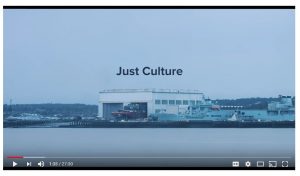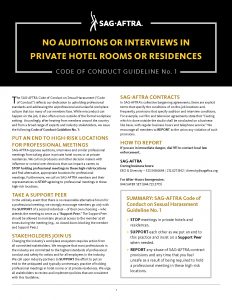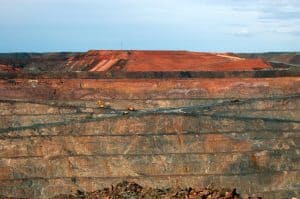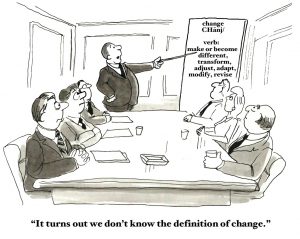 Australia’s occupational health and safety (OHS) profession was late to the process of certifying its members. The Safety Institute of Australia (SIA) has been running its certification program for a couple of years so it is difficult to assess the benefit to members and the community but a critical element in any certification is the treatment of members who breach the Code of Ethics or Code of Conduct. The revelations of corruption and misconduct from Australia’s Royal Commission into Misconduct in the Banking, Superannuation and Financial Services Industry provide important lessons in integrity and fairness to all professions.
Australia’s occupational health and safety (OHS) profession was late to the process of certifying its members. The Safety Institute of Australia (SIA) has been running its certification program for a couple of years so it is difficult to assess the benefit to members and the community but a critical element in any certification is the treatment of members who breach the Code of Ethics or Code of Conduct. The revelations of corruption and misconduct from Australia’s Royal Commission into Misconduct in the Banking, Superannuation and Financial Services Industry provide important lessons in integrity and fairness to all professions.
Category: psychosocial
“Just Culture – The Movie” – important case study
 I was born outside Liverpool England well over 50 years ago and have lived on the other side of the world ever since. I love hearing accents from Northern England as it reminds me of my relatives, my roots and, most of all, my Mother. This meant that I had to watch Sidney Dekker‘s latest 30 minute documentary at least twice so that I paid attention to what was said rather than how.
I was born outside Liverpool England well over 50 years ago and have lived on the other side of the world ever since. I love hearing accents from Northern England as it reminds me of my relatives, my roots and, most of all, my Mother. This meant that I had to watch Sidney Dekker‘s latest 30 minute documentary at least twice so that I paid attention to what was said rather than how.
“Just Culture – The Movie” (accessible through the YouTube share below) tells the story of the transformation from a divisive and unproductive blame culture to a just culture. It is an important story because it is theory, concept and idea made real, and made real in an industry sector that has a complex organisational culture only partly explained by its funding model.
USA response on sexual harassment is interesting but can be better
 Australia continues to develop various Codes and Guidances for the prevention and management of sexual harassment, particularly in the creative industries. America’s Screen Actor’s Guild (SAG) released some guidance about its Code of Conduct on April 12 2018. It is educative but Australia can do better.
Australia continues to develop various Codes and Guidances for the prevention and management of sexual harassment, particularly in the creative industries. America’s Screen Actor’s Guild (SAG) released some guidance about its Code of Conduct on April 12 2018. It is educative but Australia can do better.
A positive in SAG’s announcement is that it clearly places sexual harassment under the category of workplace safety which allows for a broad approach to the hazard and one that is supported by legislation and an employer’s duty of care.
FIFO, Fairness and the Future

SafetyAtWorkBlog’s article about the safety of Fly-In, Fly-Out workers has generated some discussion through its mention on LinkedIn which has raised some interesting points.
A common thread seems to be that it is impractical to build townships and facilities to support remote mine workers and which also provide services to workers’ families. One commenter posed these questions:
“Are we going to drag the FIFO families out to these areas, build houses for them, along with all the associated infrastructure to support them, for what may be only a 3-5 year construction program? Is it fair to drag the partners and families of FIFO workers away from their family supports (parents/friends, etc)? Away from decent medical care? Away from schools/universities?”
This may have been intended as rhetorical but prompts a question that I frequently ask when I consult with clients – “why not?”
We need to ask tougher questions about FIFO
On the recommendation of one of my subscribers I am currently listening to a podcast called Food For Thought which includes a discussion on the mental health issues associated with the Fly-In -Fly-Out (FIFO) work structure. This article is being written as I listen to the podcast so follows the threads as spoken.
Various major Australian inquiries have been held into the occupational health and safety of FIFO workers for the mining sector. The potential psychological harm of FIFO is indisputable so why aren’t we asking the tough questions and thinking about the harm that we are allowing to occur?

Continue reading “We need to ask tougher questions about FIFO”
Why don’t employers pay attention to psychological harm?
 The Safety Institute of Australia (SIA) is an active supporter of Safe Work Australia‘s (SWA) recent attention to the risks of psychosocial hazards in the workplace. On 10 April 2018, the SIA reiterated this support and its anticipation of a new SWA guide on the issue but the media release includes a statement that may be a little too polite towards employers and not sufficiently inquisitive about the safety professional’s role.
The Safety Institute of Australia (SIA) is an active supporter of Safe Work Australia‘s (SWA) recent attention to the risks of psychosocial hazards in the workplace. On 10 April 2018, the SIA reiterated this support and its anticipation of a new SWA guide on the issue but the media release includes a statement that may be a little too polite towards employers and not sufficiently inquisitive about the safety professional’s role.
The CEO of the SIA,
Humour, bystanders and safety
Effective consultation is a core element of building a functional safety management system in any workplace. This involves talking and listening. Various occupational health and safety (OHS) regulators have pushed this point in the past usually with static images of mouths and ears but WorkSafe New Zealand has released a series of videos in support of its existing”How you can use your mouth” campaign. Thankfully WorkSafeNZ has taken a leaf from the Air New Zealand book and used humour.
Of particular interest is the brief but importance emphasis on the role of the ethical bystander.
